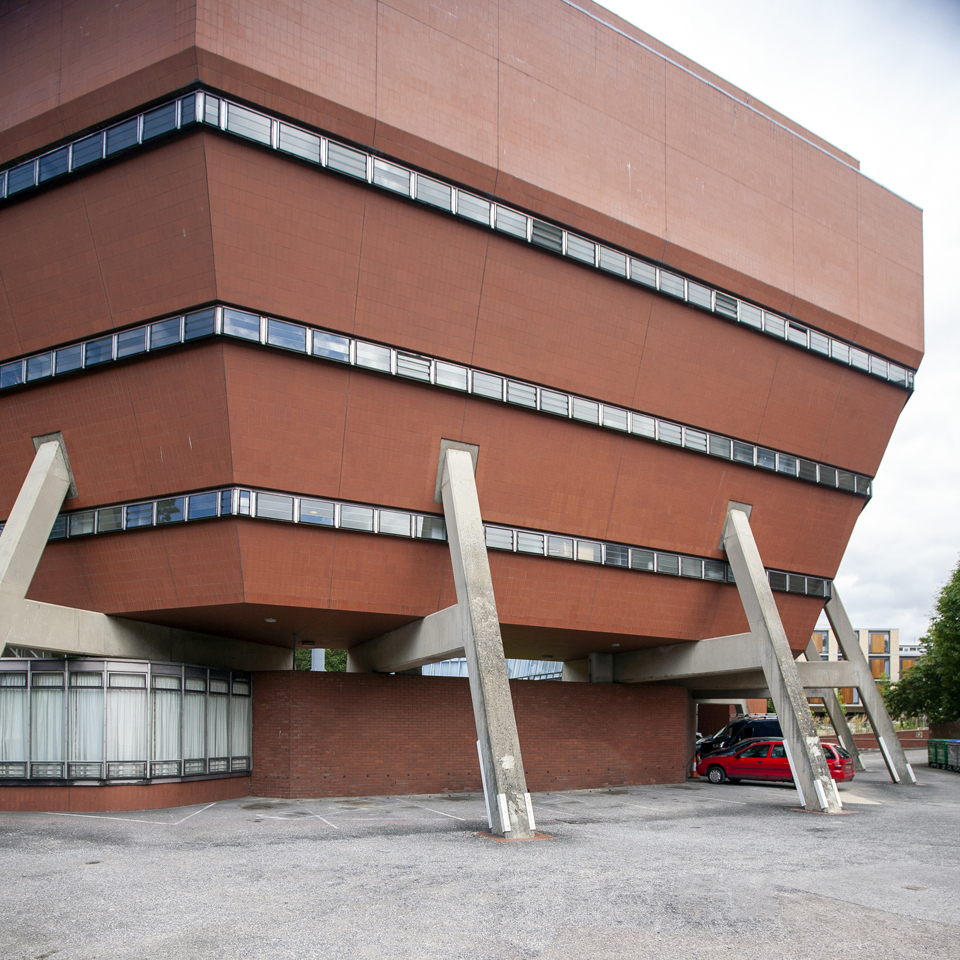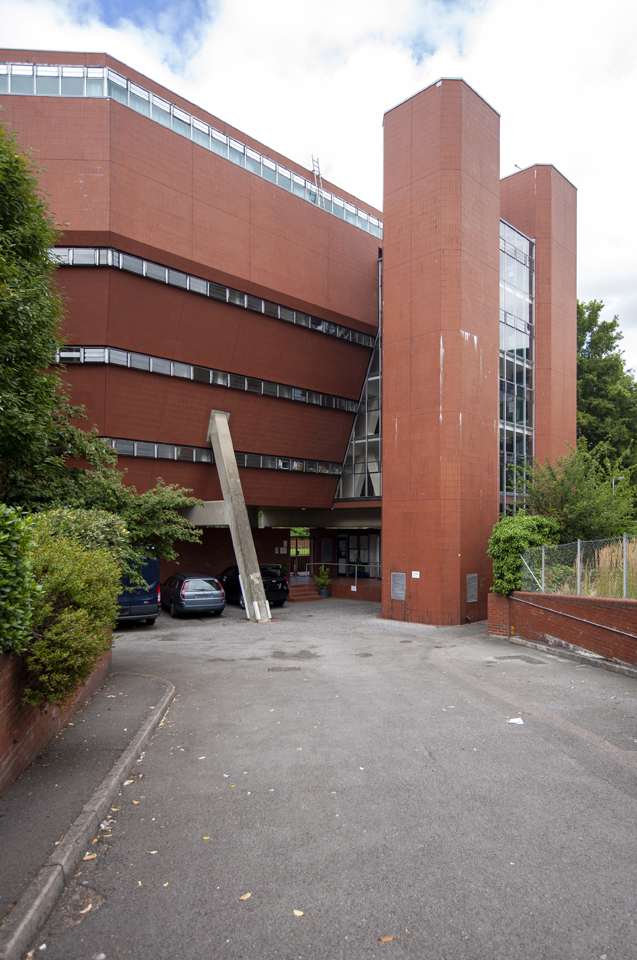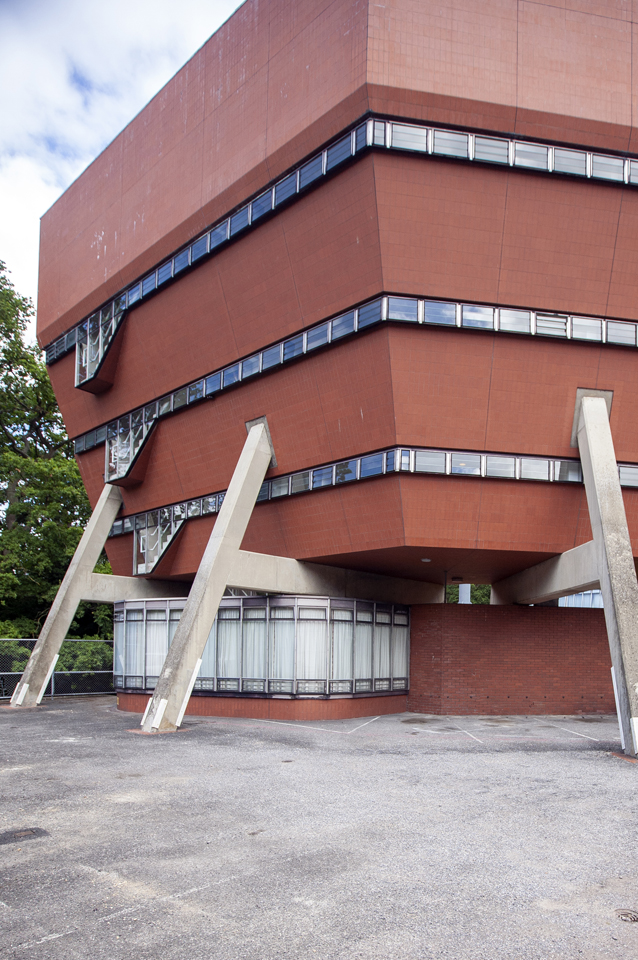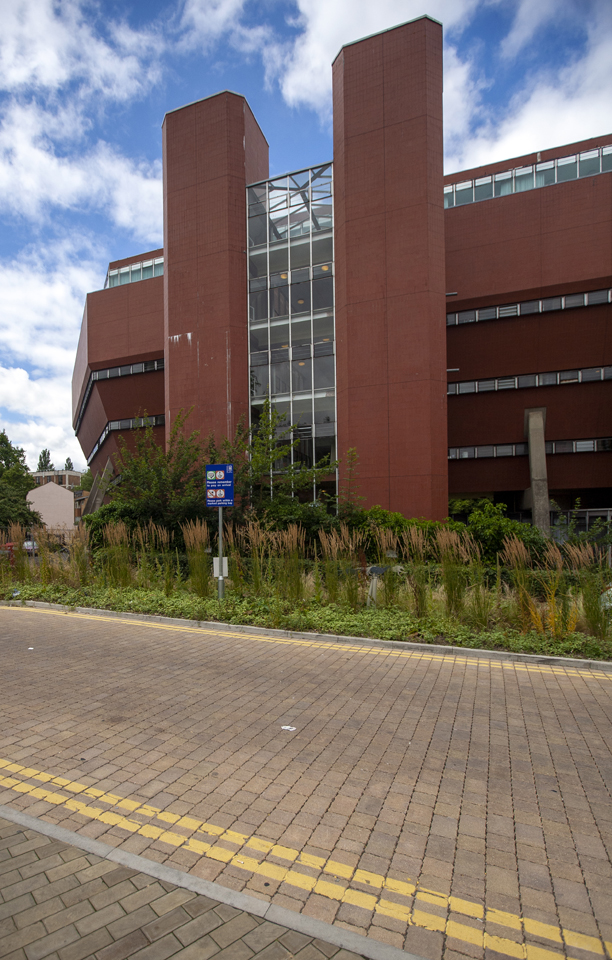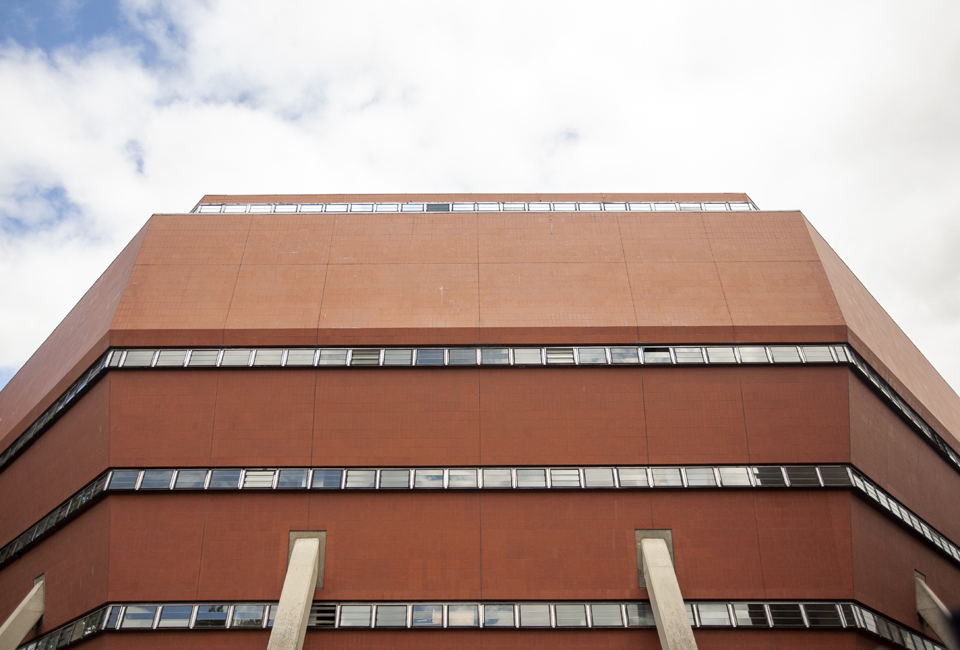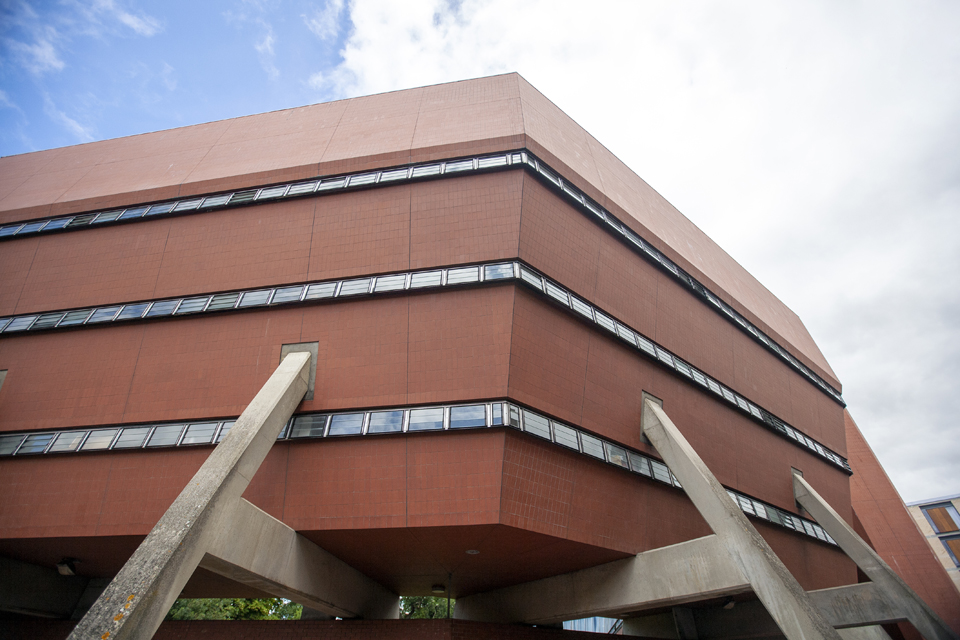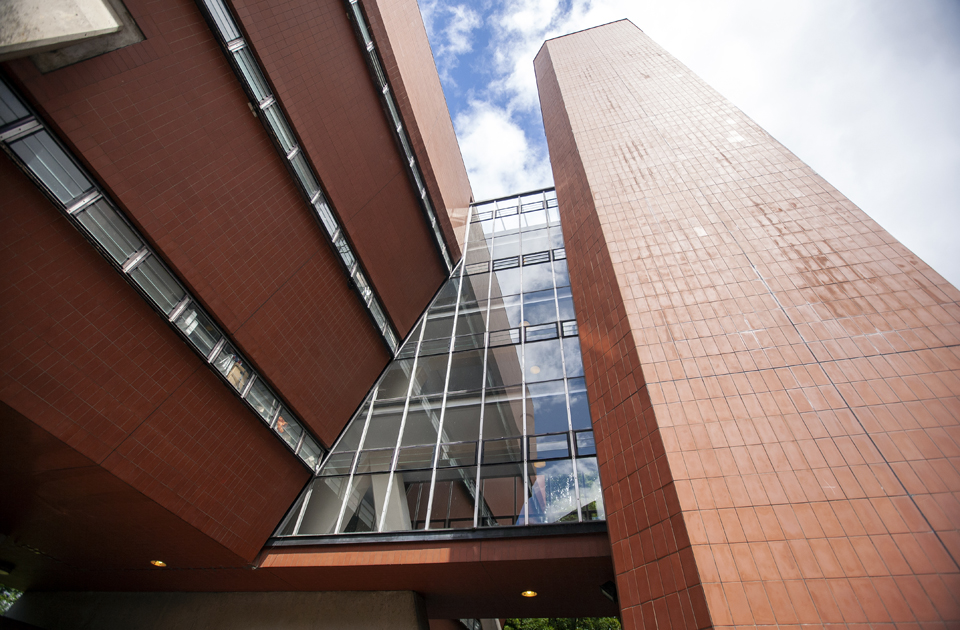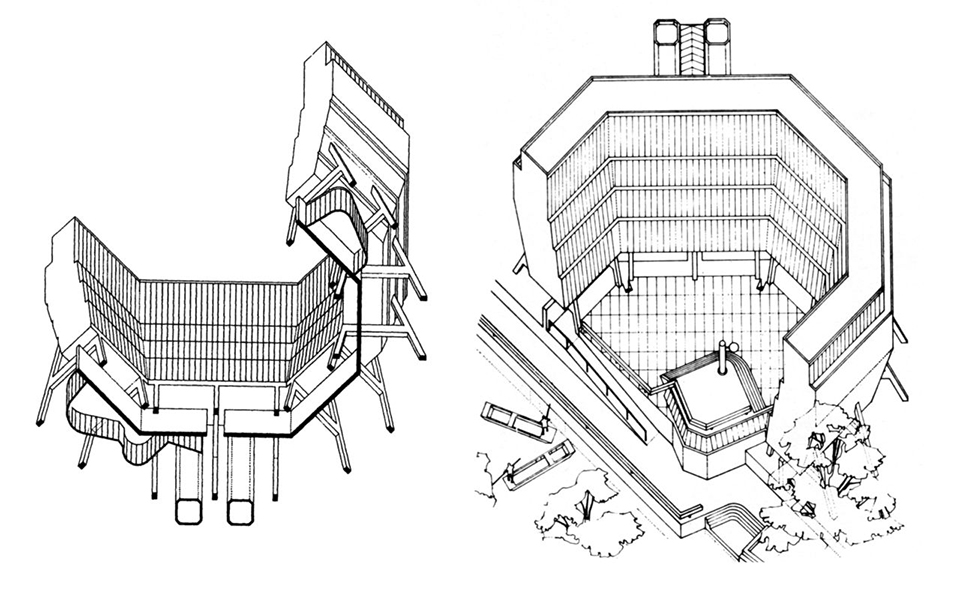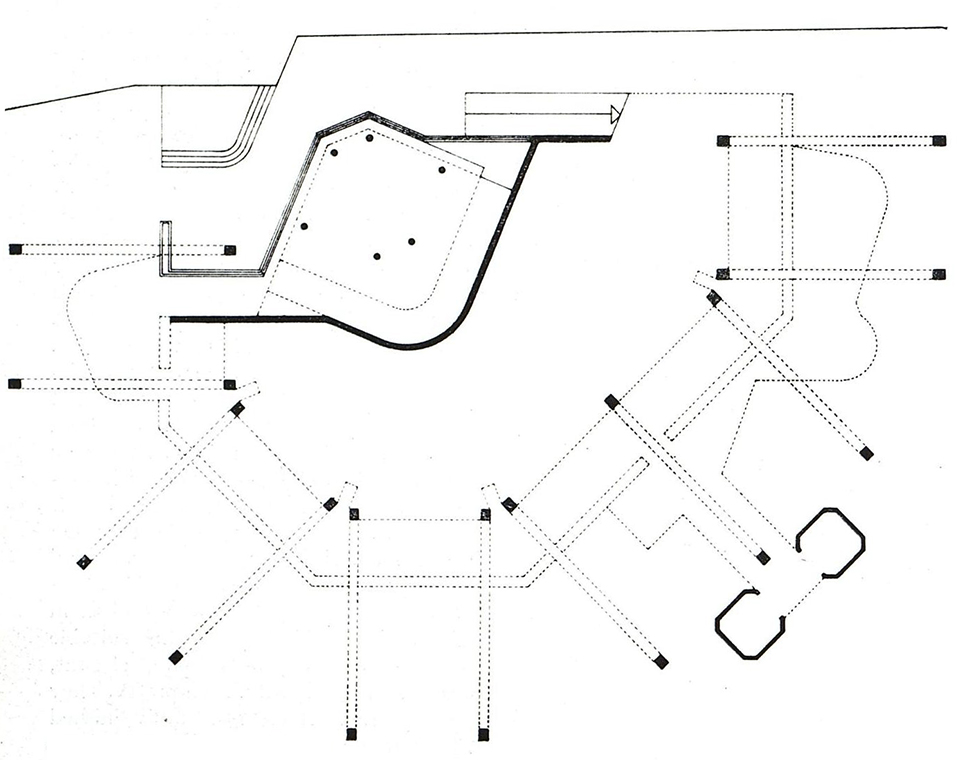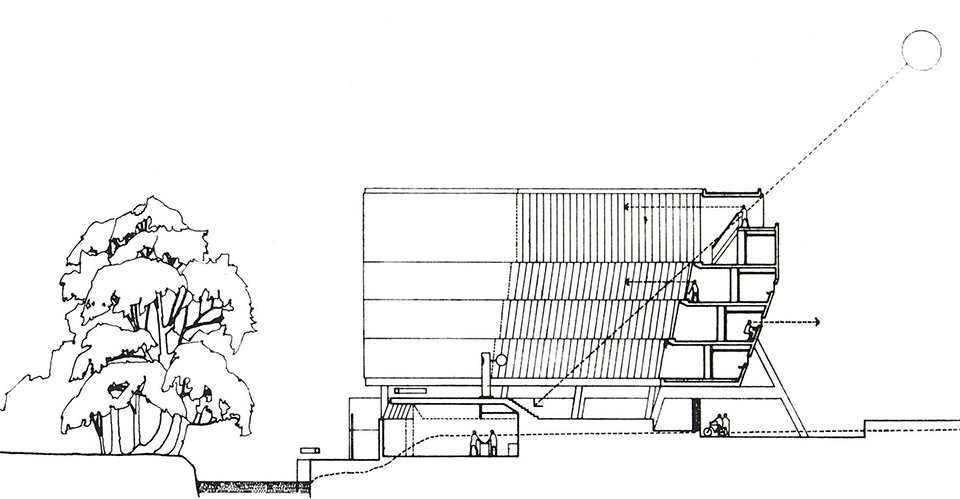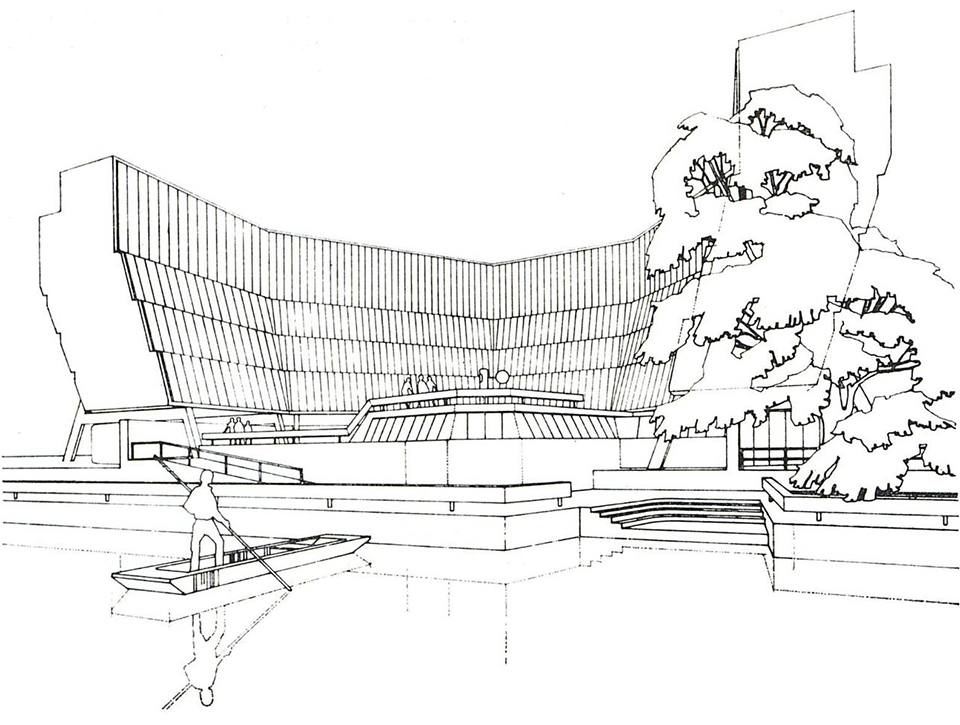Florey Building
1968
It seems inevitable that the Florey Building should be considered alongside the Engineering Building at Leicester and the History Faculty at Cambridge. It has been thus since the earliest criticism of this scheme, generally regarded as the third of a red series. Mark Girouard, writing in AR in 1972, associates the trio by virtue of their ‘splayed forms, both in plan and in section’, suggesting that this ‘sophisticated geometry’ had its genesis in the orientation of the north lights at Leicester and that this led to a three-dimensional use of overlaid grids as organisational device, expanding on the orthogonal rationality of early modernists.[1] Whilst the three buildings may be read together and compared, each has its own particular circumstance and the similarities in material and geometry do not overly extend to their respective forms. In the Florey Building I see an intimacy brought by the raking, defensive façade to the city and the private open face to the river. Reading the letters to the journals from Stirling’s contemporaries is as revealing as the journalistic critique. Other architects seem desperate to seek technical failures in an assault on a perceived wilful formalism. As a diagram, the protective cupping of the courtyard, the articulated stair and lift cores, the raised accommodation, the contrasting solidity and openness of the primary facades, and the raking form, are by no means radical. Those formal moves may not be contextual in the historical sense, but are absolute in placing the resident in context, with a very particular set of relations between the interior and the exterior. One student testified to the quality of the views ‘stretching up to Headington Hill’ and the stepped section of the buried breakfast room, raised courtyard and steps to the river give a privileged position to the inhabitants. The Florey Building appears as a whole, an exclusive object, perhaps alien to its situation, but internally bound by its own logic. The irregular A frame concrete structure is evenly spaced and as its symmetry dissolves this is supplanted by a compositional balance in plan and in section that gives it this cohesiveness. The restrained material palette reinforces the holistic sense of the scheme that denies its neighbourhood buts revels in its shiny red self.
[1] Girouard, M., 'Florey Building, Oxford', Architectural Review, November 1972, p.266
